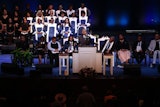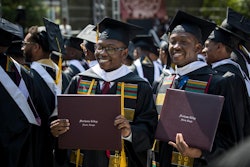Percentage of U.S. Students Taking High School
Physics Reaches All-time High
SEATTLE
A leading scientific association reports that a record number of U.S. high school students are currently enrolled in physics courses. According to data from the American Institute of Physics, more than 30 percent of high school seniors have taken a physics class, the highest mark ever attained by U.S. students. The percentages have been on the rise since the 1980s. Michael Neuschatz, a senior research associate at AIP, made the announcement during a joint January meeting of the American Association of Physics Teachers and the American Astronomical Society.
In 1930, just 15 percent of 18-year-olds had taken physics. In 2005, the figure stood at 25 percent, Neuschatz said.
Underrepresented minorities and women have also enrolled in high school physics classes at increasing rates, according to AIP. Girls comprised 39 percent of high school physics students in 1987, but that number has grown to 47 percent today. Blacks and Hispanics each represented 10 percent of physics students in 1990. The percentages
for both groups have since more than doubled to 23 percent and 24 percent respectively.
“Good physics education is the backbone of a first-class work force in science, technology, engineering and mathematics,” says Dr. Toufic M. Hakim, the executive director of AAPT. “The future of U.S. economic competitiveness hinges on strong science education in our country.”
According to Neuschatz, the growth in the number of students taking physics can be largely attributed to the broader selection of physics classes currently available, a contrast to the days when high schools offered only one format. Many students now are taking a conceptual, or non-computational, type of physics. Others opt for honors or Advanced Placement versions. In addition, officials believe that students are choosing to take physics to make themselves more competitive in the college applications process.
In addition to presenting the high school student data, Neuschatz reported that the number of physics bachelor’s degrees attained in the United States has grown, increasing more than 31 percent since 2000, to more than 5,000 in 2005. The AIP data show that physics bachelor’s degree recipients are eight times more likely to earn any type
of doctoral degree than those with non-physics bachelor’s.
© Copyright 2005 by DiverseEducation.com


















